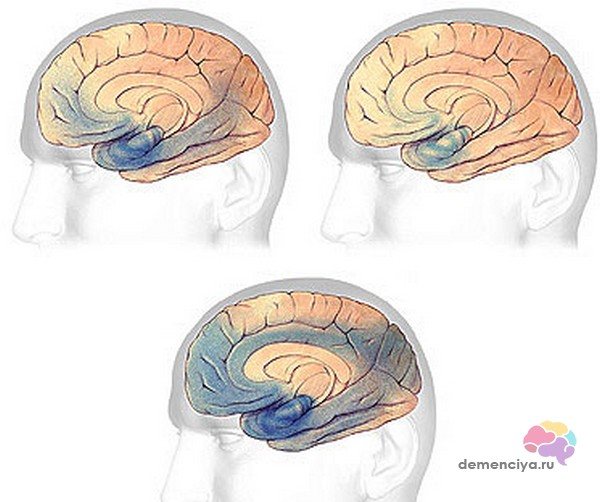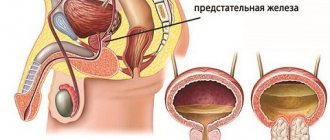Amyotrophic lateral sclerosis is a steadily progressive motor neuron disease with a fatal outcome. The disease is incurable. Thanks to drug therapy and modern drugs such as Riluzole (you can only buy it on the Internet in Moscow for now), it is possible to stabilize the patient’s condition and slow down the process for one to three years.
Scale of the problem
According to the World Health Organization, the scale of the problem is large. And, unfortunately, the number of older people with symptoms of dementia is increasing annually by almost 8 million new cases. Moreover, the age of those affected is becoming younger and younger. If previously the diagnosis was given to very old people, now symptoms of dementia can appear as early as 50-55 years.
If you notice symptoms of dementia, you should consult a specialist
In 2020, there were already 50 million patients diagnosed with senile dementia in the world. And by 2050, if the upward trend of the disease does not change, there will be more than 131 million people.
Caring for a bedridden person
Caring for people who are unable to care for themselves is very difficult and responsible work. Everything is provided here: procedures for the patient’s personal hygiene (toilet, washing hair, bathing, brushing teeth, cutting hair and nails, massage, preventing bedsores, etc.), feeding, cleaning the room. In order for all these procedures to be carried out correctly and efficiently, you need to have the appropriate skills and experience. In addition, it is very important to maintain psychological stability and patience even in moments when the patient is capricious and nervous.
Elderly people are especially vulnerable and touchy, and if they are still bedridden, then these feelings increase several times. This indicates that such tasks are best handled by those with high professional training. A woman who is always next to her ward will create all the conditions for him to feel calm and protected, to be surrounded by comfort and coziness and to enjoy every moment.
Features of the disease
Dementia in older people occurs as a result of pathologies of the nervous system that develop due to the decline of brain activity. The older a person gets, the more insanity progresses. This happens because irreversible changes occur in the brain at the cellular level.
Brain cells die and cannot be resurrected. But, if the symptoms of the disease are recognized in time, this process can be suspended or significantly slowed down. Otherwise, the old man’s worldview and behavior may change so much that he will no longer be able to cope without constant care.

Changes in the brain
Detection of developing dementia occurs through personal conversation, special tests and instrumental studies. In this case, you can notice the appearance of lesions, depending on the type of dementia.
Reference. Sometimes with dementia of the Alzheimer's type, instrumental examination is almost ineffective. It is possible to identify the cause of the disease and determine the location of the lesion only after an autopsy.

Changes in the brain in different types of dementia
| Type of dementia | Changes in the brain |
| Alzheimer's type | Gradual death of neurons and accumulation of beta-amyloid. Microcirculation is disrupted. At the second and third stages of the disease, one can notice enlarged grooves and ventricles of the brain, its substance is damaged, the development of dementia is aggravated by diffuse atrophy of the cortex. The amount of cerebrospinal fluid increases, hydrocephalus occurs |
| Vascular | The development of sclerosis or infarction of cerebral vessels, hemorrhages, causing extensive lesions. Gradually their number increases, in parallel with this there is a loss of those functions for which the affected area of the brain is responsible |
| Pick's disease | Development of atrophy of certain areas of the brain due to gliosis or amyloid deposition, while Pick bodies are formed at the site of the lesion |
| Alcoholic | Damage and death of neurons, vascular damage. Complicated by hemorrhages, microstrokes |
| Huntington's disease | An increase in dopamine in the ganglia, their degeneration, subsequent damage to the frontal lobes. Development of atrophy of the subcortex and cerebral cortex. |
All changes lead to the development of atrophy, reduction of brain tissue and their replacement with cerebrospinal fluid. The process is irreversible, improvement in dementia is possible, but does not last long.

Early symptoms of dementia in the elderly (initial stage)
Symptoms of dementia may vary among older adults at the same stage of the disease. However, doctors identify common characteristic signs of the disease. At the initial stage it is:
- Increased irritability.
- Sudden loss of memory over short periods of time.
- Difficulty speaking.
- Conflict in relationships with people.
- Aggression.
- Hatred of everything around you.
At an early stage, these signs may not appear all at once, but only some of them. This should not be ignored. The sooner a person seeks help from a specialist, the easier it will be to stop the course of the disease.
Video
No one can determine the exact date of death of a patient, no matter how much you want it. But there are a number of signs indicating that a sudden death is approaching. So:
1. Lack of vital energy.
A bedridden patient has very little energy left; he sleeps most of the day and spends very little time awake. It even happens that a person can sleep all day without waking up. This is not good, because movement is life, even if it is a bedridden patient, you need to sit, roll over, whatever, but not sleep around the clock. You need to fight for life in any condition, because... Most often, it is the strength of spirit and the desire to live that saves a person.
3. Hearing or vision loss
Loss of hearing or vision are ailments that our pensioners rarely manage to avoid. Sometimes only hearing goes away, sometimes only vision, and sometimes all together, plus temporary hallucinations appear. You can often hear the patient talking to those who have long been dead.
4. Loss of appetite
Loss of appetite and refusal to eat is a bad sign. The patient often refuses not only to eat, but also to drink. In order not to deprive the patient’s body of moisture, we recommend periodically moistening his lips with a sponge and water.
5. Change in urine color
The color of the patient's urine becomes dark brown and sometimes red, and the smell is pungent.
6. Decrease and increase in body temperature
As death approaches, brain cells die and the patient's body is left to its own devices. For this reason, the patient begins to face the fact that body temperature can rise to 38.5, and then sharply drop to 37.00 within a short time. In order to normalize the patient's condition, doctors recommend giving the patient antipyretic drugs. In addition, it is necessary to give the patient painkillers, such as Aspirin, Nurofen, Ibufen, along with antipyretic drugs.
7. Changes in the intestines
In addition to changes in the bladder, a bedridden patient often experiences changes in the intestines. The patient's appetite decreases, and for this reason the stool becomes harder, especially if the person drinks very little water. If your patient does not have bowel movements for 3 days, this is not good and can lead to intoxication and severe abdominal pain. It is necessary to take measures, because... the intestines should work like a clock. In this case, we recommend giving the patient special medications to soften the stool, after consulting with a doctor.
8. Swelling of the legs
Swelling is a sign of kidney failure and often accumulates in the legs. To relieve swelling from the legs, it is necessary to provide the patient with an elevated position of the legs, as well as massage. Compression stockings are available to relieve compression of the calf muscles. What is the purpose of wearing them? - Compression of soft tissues and retention of fluid in blood vessels.
9. Venous spots on the body
The appearance of venous spots on the body is most often associated with slow blood circulation - simply put, poor blood circulation. Such spots can be observed on the soles of the feet in a red or blue hue. What to do in this case? - Improve blood circulation. What can be done? - Resort to drug therapy.
- Anticoagulants are drugs aimed at preventing blood clotting. A side effect of such drugs is severe bleeding. Doctors prescribe this remedy for blood clots in blood vessels or arterial insufficiency.
- Antiplatelet agents (clopidogrel, aspirin) are drugs that prevent the formation of blood clots. Not recommended if aspirin has side effects that increase the risk of bleeding or stomach upset. Clopidogrel may also cause side effects, such as severe abdominal pain, bleeding, nausea, dizziness, headaches, constipation or diarrhea.
- Cilostazol is a drug whose action is aimed at dilating the arteries, as well as increasing blood supply in the lower extremities. Side effects of the drug are as follows: diarrhea, dizziness, headache. Also, the drug is not recommended for use in patients with heart failure.
- Diuretics - intended for venous stagnation and swelling in the legs.
- Statins are medications aimed at lowering cholesterol in the blood. You ask: “Why is this necessary?” With a decrease in blood cholesterol, the risk of sclerotic plaques decreases. You need to remember: statins can cause side effects such as muscle spasms, headache, nausea, and stomach upset.
- Diosmin. The drug is recommended for use in order to increase the tone of the venous wall. Suitable for those patients who have a problem: thrombosis with inflammation of the vein walls or varicose veins.
- Pentoxifylline. This medication is able to improve blood circulation in the lower extremities and is used when this is impaired.
Attention! We have indicated 7 drugs that can only be used after a detailed medical examination and consultation with a doctor. No self-medication!
10. Uncontrollable emotions
Physical limitations are accompanied by emotional instability. Changes in mood are one of the key moments that is inherent in bedridden patients. Sometimes, patients try to limit their social circle or avoid contact with people altogether, and this is understandable. No one wants to be seen as helpless and unable to control their actions. At this moment, relatives need to be patient and calm, show care and warmth to the bedridden patient.
Later symptoms of dementia in older people (moderate stage)
At a moderate stage of disease development, the following occurs:
- Decreased intellectual abilities.
- Difficulty remembering events, things, phrases.
- Loss of previously existing skills.
- Sleep disturbance.
- Communicate using template phrases.
- Increased activity.
- Denial of any norms and rules.
- Epileptic seizures.
This stage is already difficult to treat. Progressive degradation processes are difficult to slow down. Doctors usually give disappointing prognoses in such cases.
Symptoms of dementia in the elderly, indicating a critical condition (advanced stage)
In severe cases with an advanced form of the disease, the following is observed:
- Complete insanity, leading to the impossibility of independent existence. A person needs constant supervision.
- Mental seizures.
- Violation of the metabolic functions of the body.
- Forgetfulness, up to complete loss of memory.
- Asceticism.
This stage of dementia is a direct path to death. The brain can no longer control the processes occurring in the body, which leads to its death.

How to treat
Treatment for dementia in the elderly should begin as soon as the first symptoms appear. It should consist of spirit aspects:
- Medication. Medicines prescribed by a doctor will stop the development of certain symptoms and slow down destructive processes in the brain.
- Psychological. The patient should live in a family where love and mutual understanding reign. You can’t scold him for his mistakes and illogical actions. Only support and respect can reduce the level of aggression.
Treatment
If you conduct an examination in time, then with the help of proper therapy you can slightly slow down the development of the pathological process. Treatment will prolong life without discomfort. At the last stage, it is pointless to use therapeutic techniques.
In addition to medications, they resort to psychological rehabilitation and therapeutic and preventive physical education. To alleviate the condition, use:
- antidepressants;
- psychostimulants;
- neuroleptics;
- nootropic drugs.
An important part of therapy is adherence to a daily routine. The patient should eat properly and completely avoid smoking and drinking alcohol.
You can slow down degradation with the help of intellectual and physical activity, creative activities, and conversations with a psychologist.

Early dementia is a problem that cannot be eliminated, but you can buy a little time for the person.
Some sad facts about dementia
Science has established the following facts about dementia:
- The disease is hereditary. If someone in the family had such a diagnosis, then there is a very high probability that in old age it will manifest itself in one of the descendants.
- Early symptoms of dementia can appear at a young age. If such signs appear, you should definitely consult a doctor for treatment. Otherwise, a person may experience severe emotional shock, and sharp premature aging of the whole organism will begin.
- The speed of development of the disease varies from person to person. But doctors note that people living in families show less aggression than people living alone.
- Dementia occurs twice as often in older women as in men.
- Drug addiction and alcoholism can trigger the onset of dementia at an early age.
- If you notice the first symptoms of dementia in the elderly, you should consult a doctor for treatment. This is a rapidly progressing disease. If correction is not prescribed, the patient’s aggressive behavior can become dangerous to others.











